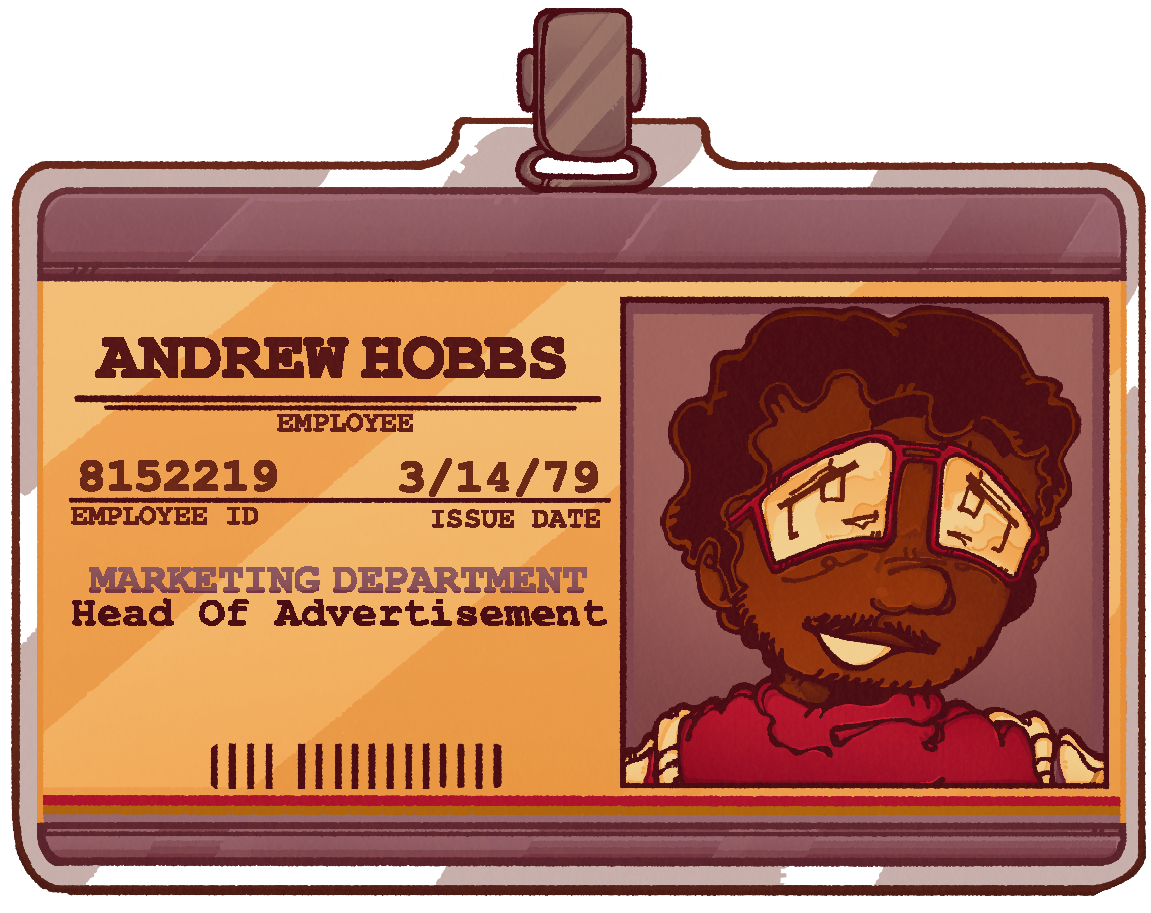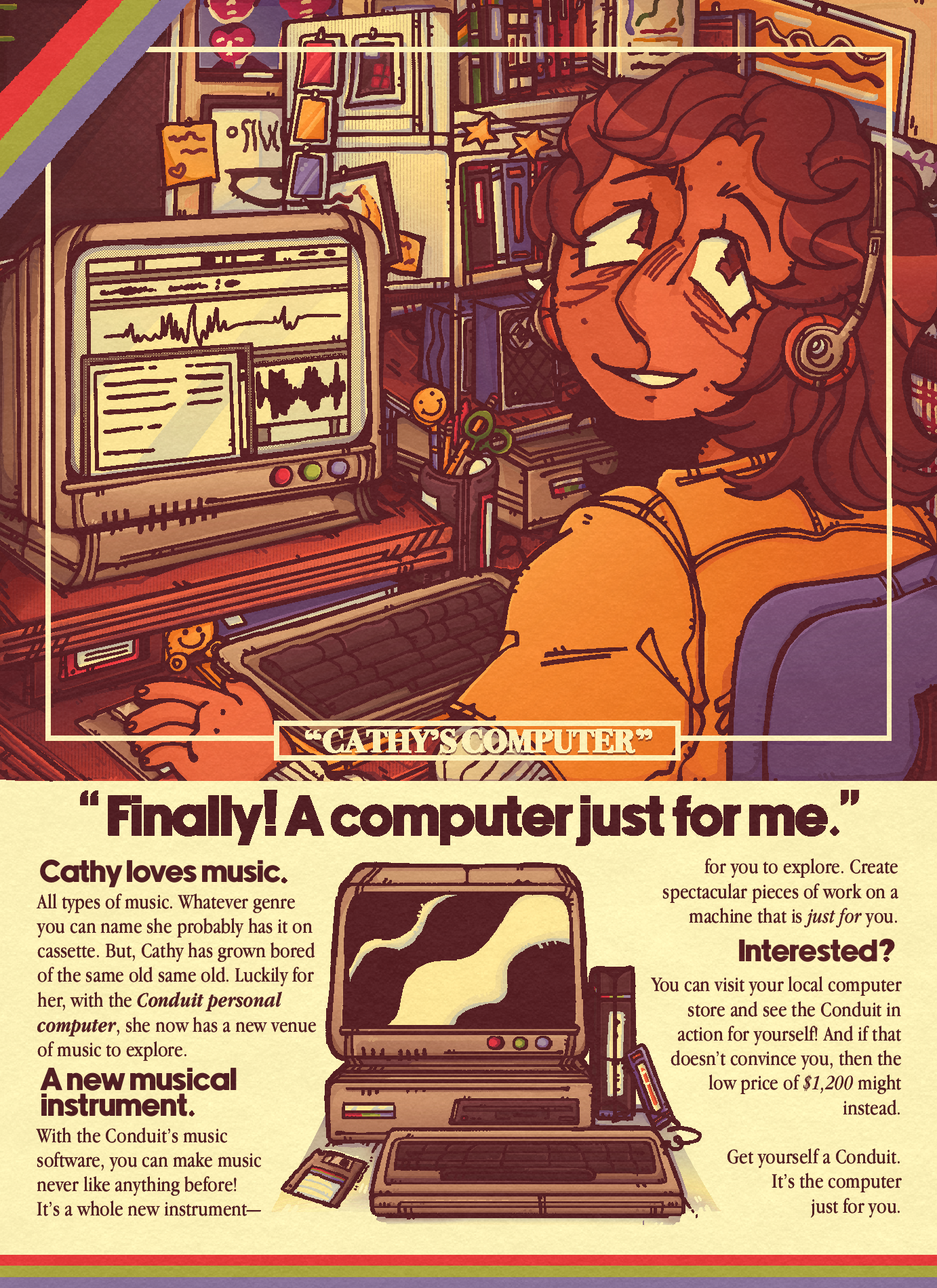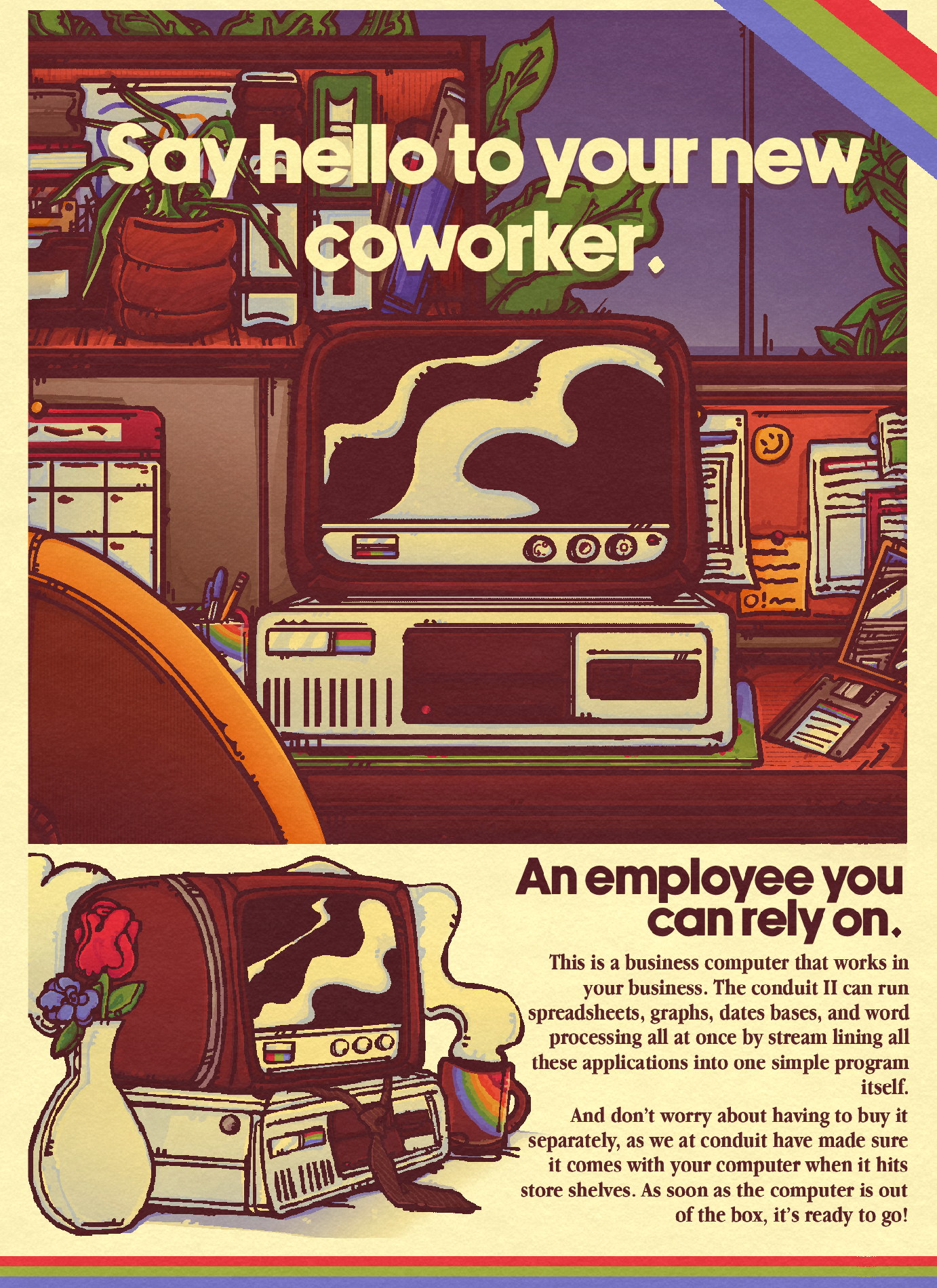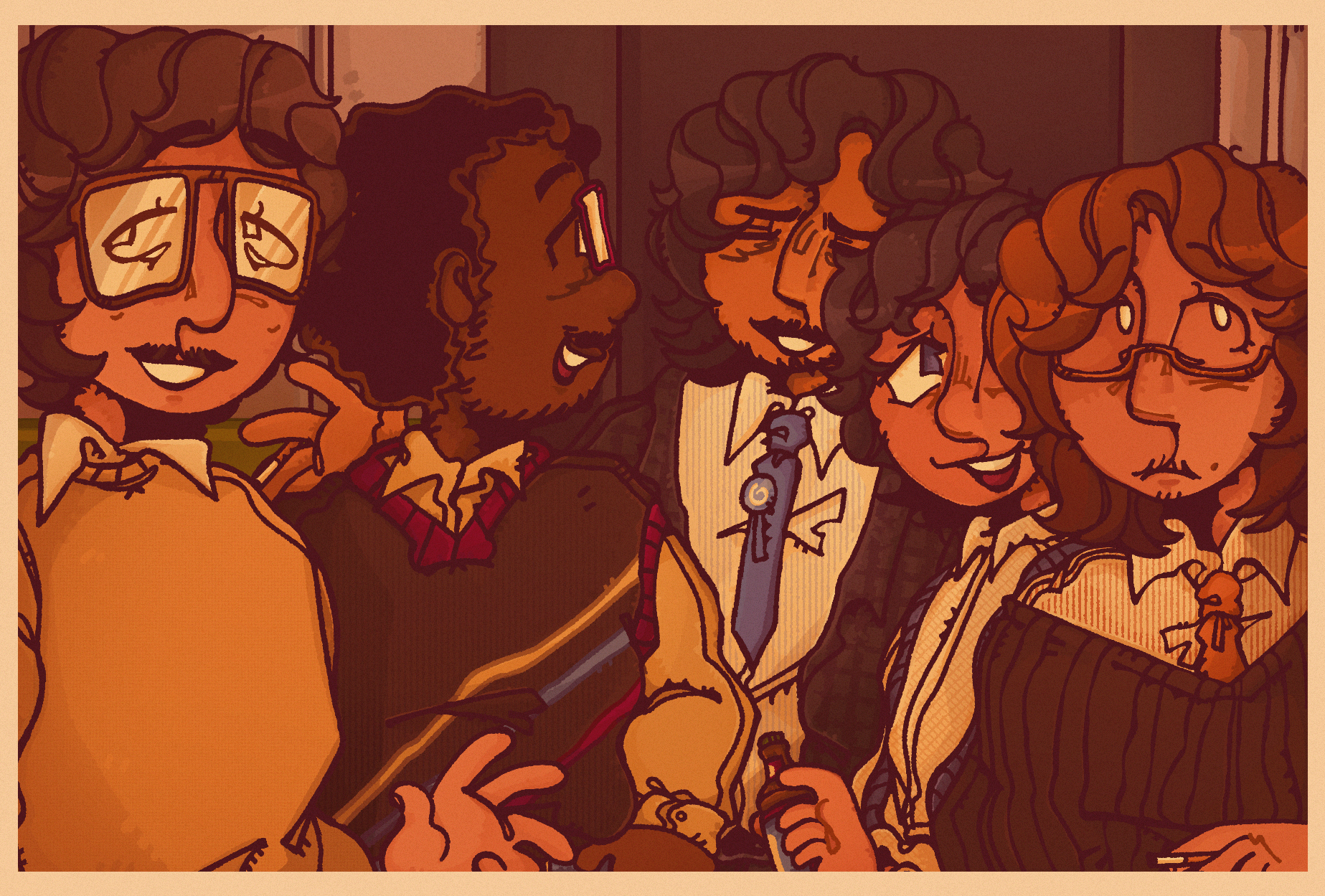An Interview
With Marketing Director,
Andrew Hobbs.

Hobbs's work ID from Conduit.
Q. What were you up to before you're time at Conduit?
A. I had been working in the marketing department for a clothing store at the time. It was my first serious job, from what I remember. I was freshly out of college and took the first job handed to me. I would've been working there as a marketing assistant. The job paid fine and I liked it well enough, but I felt bored by it by my first year in.
Q. How did you first hear about Conduit?
A. I was a close college friend of Nasseri's. We'd talk here and there once I had graduated, and stayed in contact the best you could back then. When he was getting ready to leave IBM and start Conduit, he gave me a ring and asked if I'd be willing to be their head of advertising. I said yes almost immediately. Looking back at it, it was a risky move to make. I had known little to nothing about computers, barely even worked with one, and never been anything higher than a manager in my life, but I was 25 years old and thought it could be my big break.
Q. Were you close with any of the other founders of the company before its formation?
A. I had known Guzmán through Omar back at NYU. We had talked some but we were nothing more than acquaintances. I remember him being pretty quiet back then, not shy but not one for much conversation. Sylvia would have still been living in the UK by then, so my first introduction to her was during my first day in the office.
Q. What did being the head of advertising entail?
A. For the first year at Conduit, it entailed being the entire department. I'd have to analyze the tech market, try to create advertisements that would expand the reach of the products we were putting out, and try to see what newspaper or magazine would be willing to put those ads in the paper, all while trying to juggle a year old start up's budget. By '82, we had gotten the department mostly sorted out and I mostly helped come up with ad campaigns and oversaw their development.
Q. Did most of the employees who worked with Conduit during the early years have a lot on their plate?
A. For the most part, yes. If you had a skill or knowledge on anything that you could do as a job, you were most likely also working as it. It wasn't the greatest way to do things but with a team as small as it was back in 1979/80? It was the only real way to get work done in the office.
Q. How long did you work at Conduit?
A. During its entire operation, so 13 years. Even if it wasn't exactly the sturdiest job, I look back at my time there fondly.
Q. What projects did you work on at Conduit?
A. All of them, some more than others though. Most of the ads from ‘79 I had made, some of them were done by a freelancer someone in the company knew. When the development for the company's first PC started, I got brought on to develop the campaign for that and quickly found my hands getting too full to properly focus on the other products Conduit was releasing on the side. Then by ‘85, the entire company's focus had moved to the planned successor product and almost everyone in the company was involved in the development of in some way or another.
Q. How would your team go with creating ad campaigns for products?
A. Well, when it was just me advertising the computer upgrades, I mostly focused on emphasizing the performance and dependability of the products in the ads. I wanted potential customers to feel like they could trust us, even without knowing our company by name.
With the development of the Conduit I, I remember we focused and hounded on the personal aspect of the product. It had stemmed from one day in the office where I had sat with other people apart of the project and skimmed through what had to be a hundred computer ads, and noticed that almost all of them had these boring clean suited men and women sitting at their office cubicle working on spreadsheets on these machines that could do more.
We wanted to do what was the opposite of that and show how personalizable the Conduit was and how it wasn't just made for people in stuffy offices but for everyone. From that, we had drummed up the tagline "A computer just for you." There were, of course, some variations of the phrase but it mostly stuck on the core message that the computer was made for you and you could do whatever you liked with it. To get across the "everyone" aspect, we got some of the kids of the employees at the company to test out an early prototype of the machine and took some photos of them for some of our magazine ads.

A Conduit I ad that Andrew had provided me with.
"We had posed up her desk a little bit more to be more camera ready." - Andrew Hobbs.
When it came time to work on the Conduit II, things ran a little differently in the company. We were all a little older now, some of us were turning thirty, and others were entering their early thirties. We were now trying to be taken seriously in the industry and we wanted to put out a product that reflected that. Nasseri, I believe, had referred to the machine once as the original PC's "Older, more professional sister." and we had wanted to reflect that. This PC was going to be more pushed towards office workers, so we wanted it to come off as a more professional product while also keeping the somewhat playfulness of our old advertisements. It was a bit of a hard task to find the perfect middle ground, but I think what we had landed on would've worked well if the PC had a chance to hit the market.

A rare Conduit II ad provided to me by Hobbs.
"I think this was a desk of one of the guys down in finance that we fixed up for the shoot." - Andrew Hobbs.
We went through several ideas but landed on the concept of the Conduit II being the "coworker/employee you dreamed you had." And we had done several ads where it was sitting in cubicles and office meetings like it was just another employee. It was professional, while still being cute.
Q. Do you think the ad campaign for the Conduit II would have been well received? Especially after having the "a computer for everybody" motto for the Conduit I?
A. That's a good question! I think maybe a small handful of consumers would have felt betrayed by the more professional turn of the company. But when it came to computers at the time, people were more focused on whether the machine you were advertising had the specs they wanted rather than the ads themselves. So most people wouldn't have even blinked an eye at the switch-up or even expected it. Maybe some people would feel the switch was hypocritical. It’s hard to say!
Q. Do you remember why the Conduit II was canceled?
A. There were plenty of factors. Depending on who you asked, it was either because of us blowing the budget on the project, missing deadlines, continuous delays, or the layoffs. Most people chalked it up to Guzmán pulling out of the project right before launch, and maybe it was that, but that was only ever the killing blow on an already failing project.
Q. Guzmán had pulled out the project?
A. It's what we were told back in my department. I've never known the full details about why and no one else in the company seemed to get clear answers about it either. It became sort of a mystery really, but I always assumed it was because of the stress.
Q. What was the environment like in the office during that time?
A. Quiet. I think most of the people at the company started getting the inkling by the second delay of the CII in '87 the company was starting to decline. Wasn't until the layoffs started happening in '88 that people started looking for better jobs, or stayed to watch the ship sink. There was some hope around spring 1989 since they were going to finally publicly debut the CII, but then Guzmán left and it knocked the wind out of everyone's sails.
Q. When did you get the news about the company filing for bankruptcy?
A. Fall '89. The company couldn't recover from the toll the CII project took and was teetering into going into debt, so it was the best course of action they could've taken. Conduit did keep running a little while after, never putting anything big out but just smaller products like back in 1979. Once 1991 came in, that was it. The company shut its doors and everyone looked for work elsewhere.
Q. To close things off, do you have any fun tidbits from your time at Conduit you'd mind sharing?
A. After the big Conduit I presentation we did for the shareholders, the team was all mingling in the lobby. Shaking hands, giving each other pats on the back. Some photographer for the newspaper, I think his name was Gianni, was walking around taking candids of everyone. I was busy chatting with Nasseri, didn't see him come by when he took our photo but I had hunted him down a little while after to ask for a copy of it.
Some weeks after, I went to sit down in my office and saw this sitting at my desk.

From left to right - Daniel Curling (finance department), Andrew Hobbs, Omar Nasseri (CEO), Jennifer Wolf (engineering department), Peter McCarthy (software department)
No clue who left it on there, I guessed Nasseri, but I remember staring at it for a while before starting my work day. I always thought it captured the high we were all feeling that day.